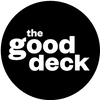We’ve all been there: staring at a blank slide, trying to sound "professional," only to end up writing things we’d never actually say out loud. This happens across industries because there’s this ingrained belief that complex language makes us seem more credible.
Spoiler alert: it doesn’t.
Instead of impressing anyone, it creates friction. Your audience has to work harder to process the words, and before you know it, they’re tuning out. Why? Because they’re spending more energy decoding your message than absorbing it. If your goal is to connect and inspire action, that’s a fail.
So, what’s standing in the way? Here are the three most common language traps:
The Usual Suspects
-
Jargon: These are the industry-specific terms that feel natural to us but sound like noise to everyone else. In tech, it’s words like “synergy” or “scalability.” They might mean something in your world, but for anyone outside of it, they’re meaningless.
-
Formal Language: Think words like "commence," "endeavor," or "facilitate." They sound polished but come off stiff, making your slides feel distant or cold.
-
Technical Terms: Sometimes, specificity is necessary, but if your audience isn’t as deep into the details as you are, terms like “amortization” or “asynchronous transfer mode” can lose them entirely. They’re disengaging before you even hit the main point.
How to Break the Cycle
When writing slide copy, imagine explaining your idea to a friend outside your industry. Would you say, “We’re facilitating robust solutions to optimize engagement”? Probably not. You’d say something like, “We’re helping people connect better” or “We’re making this easier to use.” Everyday language creates connection. It’s what makes people feel like, “Hey, this person’s talking to me, not some corporate void.” And when people feel that connection, they trust you more.
Simplification in Action: Creating a Clear Path to Understanding
Using simple language makes your slides easier to follow, giving your audience a clear path to walk. Here’s how to get there:
-
Use Familiar Language: Write the way your audience speaks. Forget jargon and corporate-speak; pretend you’re explaining it to a friend. Ask yourself, “What’s the simplest, most natural way to say this?”
-
Focus on One Idea: Good slide copy sticks to one point at a time. If it feels like you’re squeezing in too much, break it down. What’s the one thing they need to know here? Stay with that.
-
Make It Visual or Tangible: Use language that paints a picture. Instead of saying, “our team is successful,” try, “our team hit every target this year.” Specifics help people visualize what you’re saying, giving them something concrete to latch onto.
-
Read It Out Loud: If it sounds awkward or overly formal, it’ll probably read that way too. Reading out loud helps you catch clunky phrasing, so make sure it flows naturally.
Simple, straightforward language eliminates barriers between you and your audience. When people don’t have to work to understand you, they’re engaged, focused, and ready to act. But if you’re forcing them to decode jargon or overly complicated phrases, you’re building a wall between them and your message.
The bottom line: the faster your audience understands you, the faster they’re on board.


